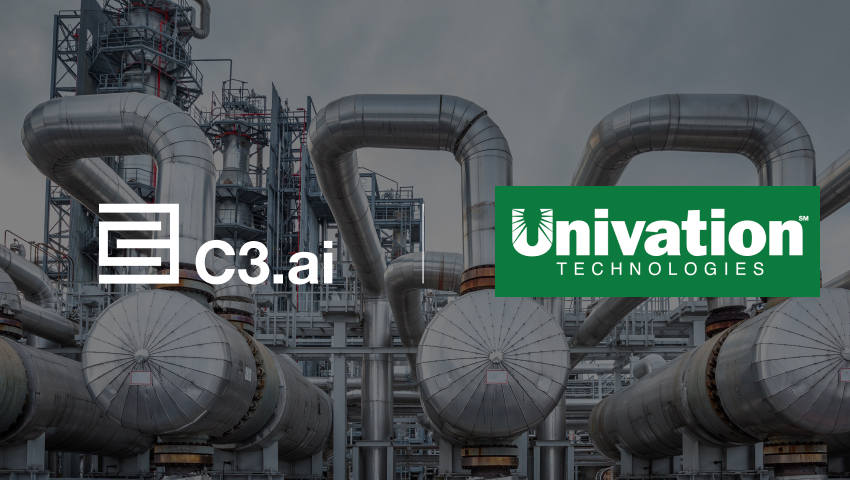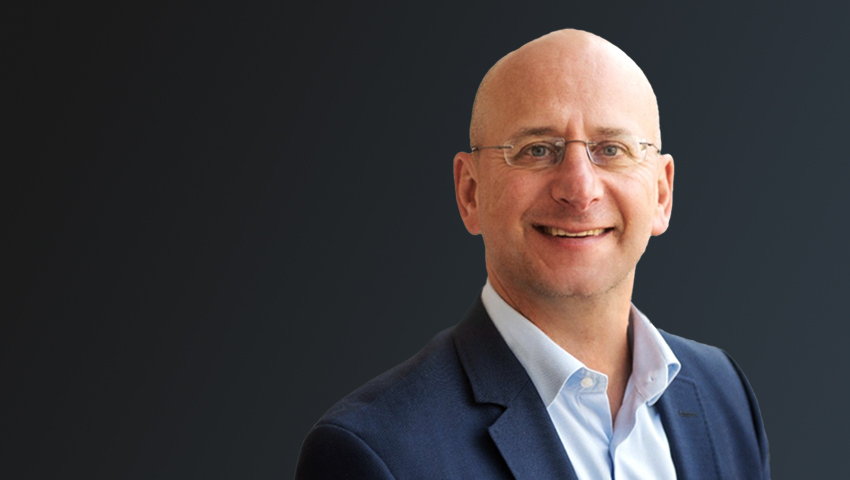The wide scale adoption of Artificial Intelligence (AI) software is one of the great transformational technologies of the 21st Century. It is also big business. The global market for AI was estimated at $387.45 billion in 2022 and is expected to reach $1.394 trillion by 2029, according to Fortune Business Insight.
One company that is helping to accelerate that transformation, is AI pioneer C3 AI (NYSE: AI).
Founded in 2009 long before the wide adoption of either the Cloud or AI by legendary Silicon Valley entrepreneur and billionaire Tom Siebel, C3 provides an open model-AI architecture that simplifies data science and application development to offer an end-to-end platform for developing, deploying, and operating large-scale AI applications; a portfolio of industry-specific SaaS AI applications; a suite of industry-specific CRM applications; and a no-code AI solution to apply data science to everyday business problems.
Early on Siebel saw AI’s potential, seeing it was one of the next big technology advancements that followed in the footsteps of the internet, graphical interface, mobile computing and high-speed broadband. “When looking at the market in 2008, it occurred to us that there was another step function of technology that is coming online, that’s going to change absolutely everything. Elastic Cloud Computing, Big Data, the Internet of Things and predictive analytics, we’re going to be another step function that was going to serve as a big, big accelerator in the information technology business. And so, we thought, there would be an opportunity to build a software platform that would enable large scale enterprise applications that took advantage of those technologies. And we thought that using those technologies, we can solve classes of problems that were previously unsolvable,” says Siebel.
Siebel was planning his next move after his pioneering CRM software company Siebel Systems was acquired by Oracle for $5.85 billion in 2005. He earned his legendary status not only for creating the first CRM platform and building it into a multi-billion-dollar business but also for famously taking on the industry’s most ferocious competitor in the form of Oracle founding CEO Larry Ellison. The Ellison vs Siebel story was the stuff of Silicon Valley lore and was amply played out in the pages of the business press, most notably by Forbes colleague Rich Karlgaard.
With his billionaire status and history for success, Siebel had no trouble attracting both a world class team and financing to enact his vision for C3. “On a Friday night in December of 2008. I sent out an email to about 25 people, every name of which you would know and raised $20 million by Sunday. We started the business in January of 2009 and proceeded to spend a decade and about a billion dollars building this information technology platform that we call the C3 AI suite,” says Siebel.
Today, C3 continues to innovate and gain market momentum. The Redwood City, California-based company reported that total revenue for the fiscal year (ending April 30, 2022) was $252.8 million, an increase of 38% over the previous year working with customers in the financial services, government, healthcare, manufacturing, telecommunications, oil & gas and utilities industries. Large organisations using C3’s AI platform include the likes of Shell, The U.S. Air Force, Baker Hughes, Con Edison, The U.S Department of Defence and Raytheon Technologies.
Siebel brought C3 AI to the public markets through its IPO in December 2020 and its stock price soared 100% in its first days of trading, reaching a high of $161 on December 24, 2020. Currently, the stock sits at around $19 as of this writing.
Why go public and deal with the vagaries of the stock market? “It’s not for the faint of heart. It’s a serious responsibility to be operating a public company, and you need to treat it seriously. We want to take care of our 800 employees, their families and our more than 250 customers. And we want to attract the kind of talent that we attract. To do that you need to provide the opportunity for the creation of some wealth,” says Siebel. And to that end, most of C3 employees are shareholders.
But being public with a high-profile founder and a stock price that has yet to approach its IPO levels, brings the potential for attention from litigious short sellers. And C3 has battled what many in the industry term as “nuisance suits.” But Siebel is non-plussed about it, “We believe that we’ll be able to demonstrate in court this is completely without merit, and we believe it’ll be dismissed on summary motion.”
Siebel had every reason to retire to his 62,000-acre ranch in Montana after Oracle’s acquisition of Siebel systems for an all-stock transaction and the devastating injury he suffered by a rampaging bull elephant while on a photo safari in Tanzania (The story was well chronicled in the pages of Forbes by Karlgaard). Siebel was gored through the leg by the elephant’s tusk and his foot was nearly severed when the several ton animal stomped on him. He lost half his body fluid and would spend the next three years undergoing 19 surgeries and intense, painful rehabilitation, but ultimately regained full use of his leg and foot. So why jump back into the start-up fray after such a life-altering experience?
“And so, the game that we’re playing at C3, like we did successfully at Oracle, like we did successfully at Siebel, is to see if we’re going to establish or maintain a market leadership position globally in enterprise AI. If we do that, we’ll be one of the world’s great software companies. If we ended up being number two, or number three, we will still be important. That’s kind of the worst-case situation. So now why do I do this? I mean, this is my idea of a good time,” says Siebel.
Can Siebel fully realise his vision to make C3 a world leading software company? To reach the upper echelons of world leading software companies ranked by revenue, C3 would have to experience a 24-fold increase in revenue to approach the current number ten spot at $6.3 billion held by ServiceNow, let alone Microsoft’s leading position at $193 billion or the number two or number three software companies, with Oracle at $42 billion and SAP at $32 billion. Clearly more work needs to be done to achieve such lofty goals. But Siebel is on a mission to do more than just build the next great software company.
“The economic benefits [of AI] are staggering. And the social implications are really quite interesting. If we don’t succeed at our jobs, people will die. There’s some risk of famine this year on a large scale in the world. With what’s going on with Ukraine, 30% of the world’s wheat that doesn’t get traded. Ten percent of the world’s rice won’t get grown this year because of fertiliser not coming out of Russia. That’s 26 million metric tonnes. That’s a half a billion people who don’t eat. So, we’re working on solving the demand chain optimization problem to make sure they can efficiently distribute food all over the world. Pretty important stuff, right? So, it’s important, it’s hard, it’s challenging, and we’re having just the time of our lives doing it every day,” says Siebel.
Siebel’s journey to becoming one of the world’s most successful and influential technology entrepreneurs began during his days as a graduate student at the University of Illinois. He came upon a paper published in 1973 by the MIT Press written by Marxist Sociologist Daniel Bell called “The Coming of Post-Industrial Society.” The paper outlined a new post-industrialised society and predicted the coming Information Technology revolution. Ironically, the paper would have a profound impact on Siebel and his desire to pursue a career in this burgeoning industry.
“He said this is going to fundamentally change the structure of the global economy. And I thought, you know, this is a game I want to play. And so, I found it very motivating. And so, I then enrolled in the computer science department at the University of Illinois and got a graduate degree in computer science and math. My focus was on an emerging field, which was relational database theory,” says Siebel.
When he was preparing to graduate, Siebel got a call from a California-based start-up company that few had heard of called Oracle, wanting to talk to him about coming to work for them. “And so, I came out to Mountain View and interviewed with Larry [Oracle Co-Founder and CEO Larry Ellison], met Bob Miner [Oracle Co-Founder] and some others, and they seemed like pretty bright guys, and I went to work for them,” says Siebel. At first, he worked in Chicago helping to explain to customers how they can apply relational database technology to business problems. He came to realise that while he was doing all the work, the salespeople made all the money. So, he decided to move into sales in the company’s Washington D.C. office and despite a doubting sales staff, he became so successful, the company moved him to headquarters in 1985 where he worked his way to become Vice President of Marketing.
“One of the things I built there was a telesales unit, which is one of the first telesales units in the information technology business. And we built a system called Oasis, a very large-scale CRM system for Oracle before the concept of CRM existed,” says Siebel. It was so successful he tried to convince Larry Ellison to pursue the development of the system as a new customer offering. “Larry did not share my vision, and he had other priorities, and he didn’t want to do it. And so, I then left, and went about starting Siebel systems.” He started the company in 1993 and would take it public in 1996, only to have Oracle acquire it in 2005.
As for the future? Even at 69, no one should discount Siebel’s energy, charisma, penchant for winning against all odds and force of will to eventually turn his vision into reality. “With Oracle, we succeeded in building a market leading company. At Siebel, we built a market leading company. At C3, We’re focused on establishing and maintaining a market leadership position in Enterprise AI. This is our idea of a good time. Yes, markets go up and down. I think right now the markets are being slaughtered, which I think is actually pretty well justified. There will be a lot less software companies in existence and we’re well-positioned for the future. We’re a quarter of a billion-dollar business that we grew last year at a 38% compound annual growth rate, we have a billion dollars cash in the bank. And we’re focused on getting the job done,” concludes Siebel.



